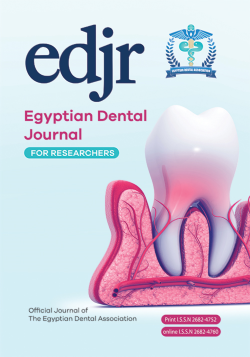Mohamed Ali Attia, Mohammed Atef And Maha Hakam,
ABSTRACT
Background: Several Grafting Materials Have Been Proposed For Sinus Augmentation Including Autogenous Graft, Allograft, Xenograft, Synthetic Biomaterials And Recently Platelets Concentrates.
Purpose: Evaluating Effect Of Injectable Platelet Rich Fibrin (I-PRF) Mixed To Deproteinized Bovine Bone (DBB) (sticky Bone) In Sinus Augmentation In Comparison With A Solely DBB Regarding Amount Of Bone Height Gained, Bone Density And Implant Stability.
Materials and Methods: 19 Patients With 20 Pneumatized Sinus 3:6 Mm Residual Alveolar Ridge Height Underwent Single Stage Sinus Lift. 10 Sinuses Were Grafted With DBB In Control Group While Sticky Bone Was Used In 10 Sinuses As A Test Group. CBCT Were Taken Immediately And 6 Months Postoperative. Osstell Readings Were Taken After Insertion And During Implant Exposure.
Results: After 6 Months, Mean Bone Height Gain Of DBB Group Was 8.46� 1.87 Compared To 8.43�2.67 In Sticky Bone Group. This Was Statistically Non-significant. Mean Bone Density Value Was 408.4�66.7 In DBB Group Compared To 547.8�158 In Sticky Bone Group. This Was Statistically Significant. For Stability, Mean ISQ Value Was 74.7�7.2 In DBB Group And 74.7�6.4 In Sticky Bone Group. This Was Statistically Non-significant.
Conclusion: Regardless Limitations Of This Study, Results Indicate No Advantages For Sticky Bone Over DBB On Amount Of Bone Generated Or Implant Stability. However, Sticky Bone May Enhance Quality Of Regenerated Bone Inside The Sinus.


